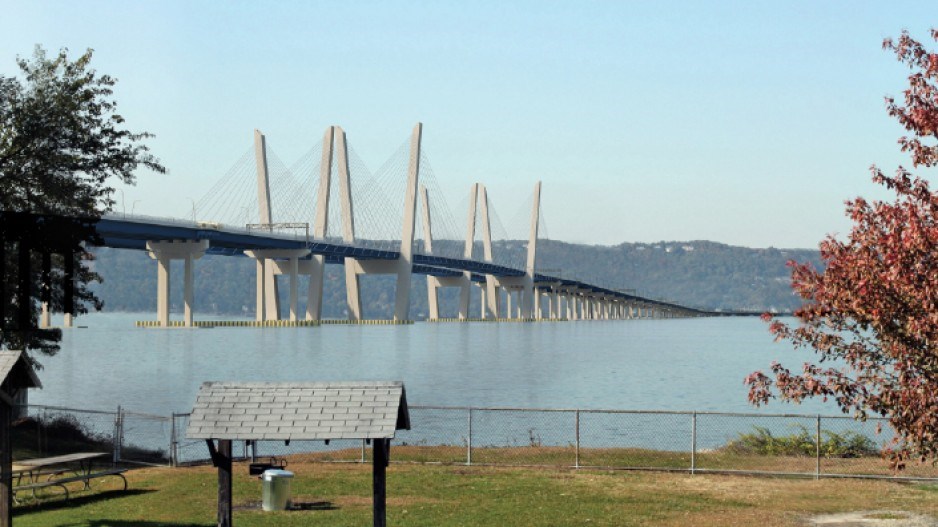Engineers at Buckland and Taylor Ltd. have worked on some pretty high-profile bridges, including the Rama 8 Bridge in Bangkok, and are just now putting the finishing touches on the design of the twin spans of the $4 billion Tappan Zee Bridge on the Hudson River in New York.
But one of their more remarkable feats of engineering was shifting the bridge truss on the Capilano River Bridge to one side in just six hours so traffic could continue to move across the bridge while it was rebuilt in 2010.
Officials in Kentucky and Indiana were so impressed with the approach, they contracted the Vancouver firm to solve a dilemma they had with the Milton-Madison Bridge, which connects Milton, Kentucky, and Madison, Indiana.
The problem was that the rapidly deteriorating kilometre-long bridge had to be built along the same route as the old one.
That meant closing it down, demolishing it and building a new one – something that would take more than a year and would require vehicle traffic to be shuttled across the Ohio River by ferry.
Buckland and Taylor's "truss sliding" is allowing the new bridge to be built in sections without shutting the bridge down. New trusses are erected parallel to the old bridge,and then slid into place, section by section, on refurbished piers.
"Instead of closing for a year, we only have to close it for 10 days," said Buckland and Taylor CEO Darryl Matson.
"It will be an engineering marvel in that it's the largest truss slide – as far as we can tell – ever attempted in North America, potentially in the world," said Will Wingfield, a spokesman for the Indiana Department of Transportation.
The truss sliding technique won't be needed when the B.C. government proceeds with its next major bridge project: replacing the George Massey Tunnel with a new bridge at an estimated cost of $3 billion, starting in 2017.
Matson said Buckland and Taylor is teaming up with engineering, construction and financing firms to bid on the project.
While there's no guarantee the firm will win the design contract, it has a good track record in B.C. Buckland and Taylor has worked on the design of the Alex Fraser and Golden Ears bridges, as well as the Canada Line bridge between Vancouver and Richmond – the first "extradosed" bridge in North America, extradosed meaning a hybrid that uses both girders and cable stays for support. Matson said the B.C. government is largely responsible for Buckland and Taylor's success in becoming an engineering firm that specializes solely on bridge design.
Founded in Vancouver in 1972, Buckland and Taylor initially did a range of construction engineering, Matson said. When it landed the Alex Fraser Bridge contract in the 1980s, it built the first cable-stayed bridge the firm's engineers had designed.
The expertise it gained on that project led to numerous other contracts to design cable-stayed bridges – the Rama 8 in Bangkok being one of the more visually dramatic.
"The government made a conscious decision that they wanted to develop that expertise in British Columbia," Matson said.
"They took a chance with us and gave it to us, and we're now doing four cable-stay bridges in the U.S. and have done probably 10 or 12 around the world, as a result of that experience. We've been incredibly successful at exporting experience that we've gained here in B.C. to around the world."
In 1998, the firm was acquired by COWI A/S, an international engineering consulting group based in Denmark, though Matson said Buckland and Taylor operates autonomously.
With six offices across North America, Buckland and Taylor has been growing in recent years, especially in the U.S.
"We've gone from about 80 people four years ago to 180 now," Matson said.
He added that 135 of those employees are engineers.
"We've increased our U.S. market tremendously. In 2012, there were six major projects in North America that were being procured, and we won four of them."
There is no shortage of work for the company, especially in Canada and the U.S., where several major bridge projects are in the works. They include Montreal's Champlain Bridge, which is to be replaced – at a cost of between $3 billion and $5 billion – and the New International Trade Crossing between Detroit and Windsor, Ontario, estimated at between $1 billion and $2.2 billion.
"We're tracking a dozen billion-dollar-plus projects that we expect to see in the next four to five years," Matson said.




